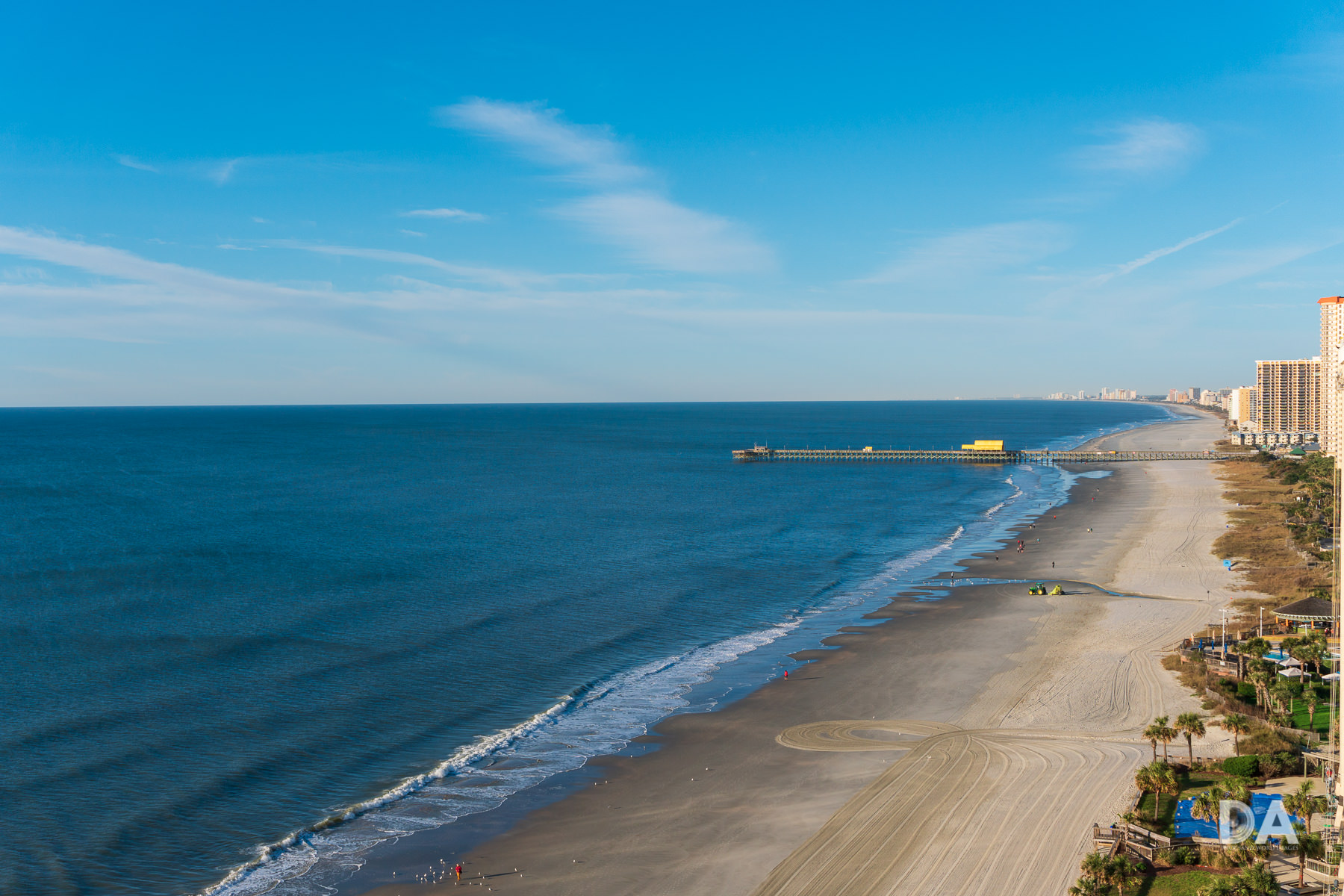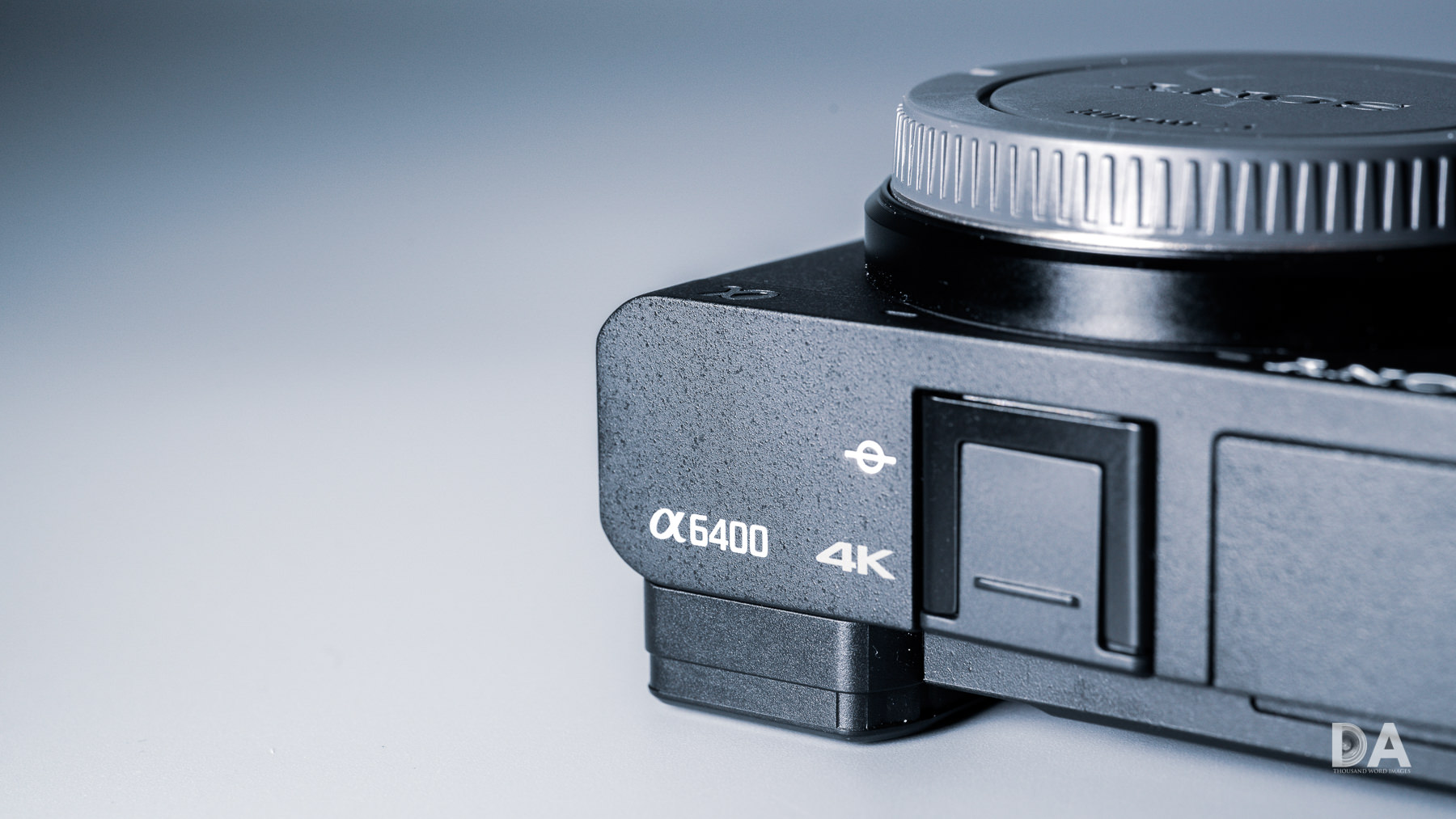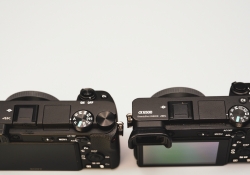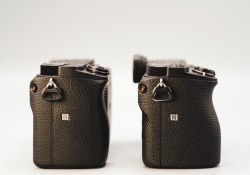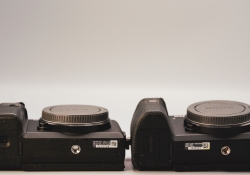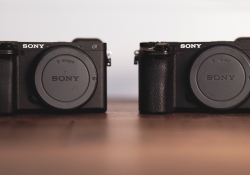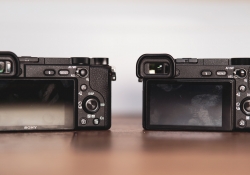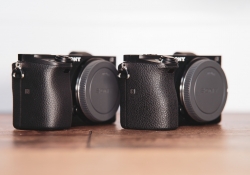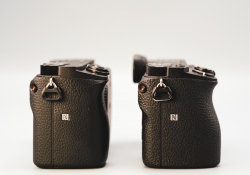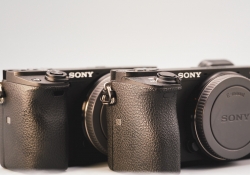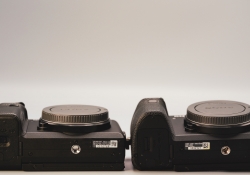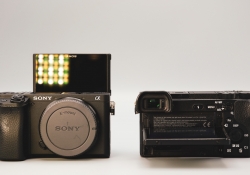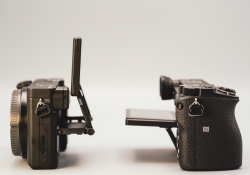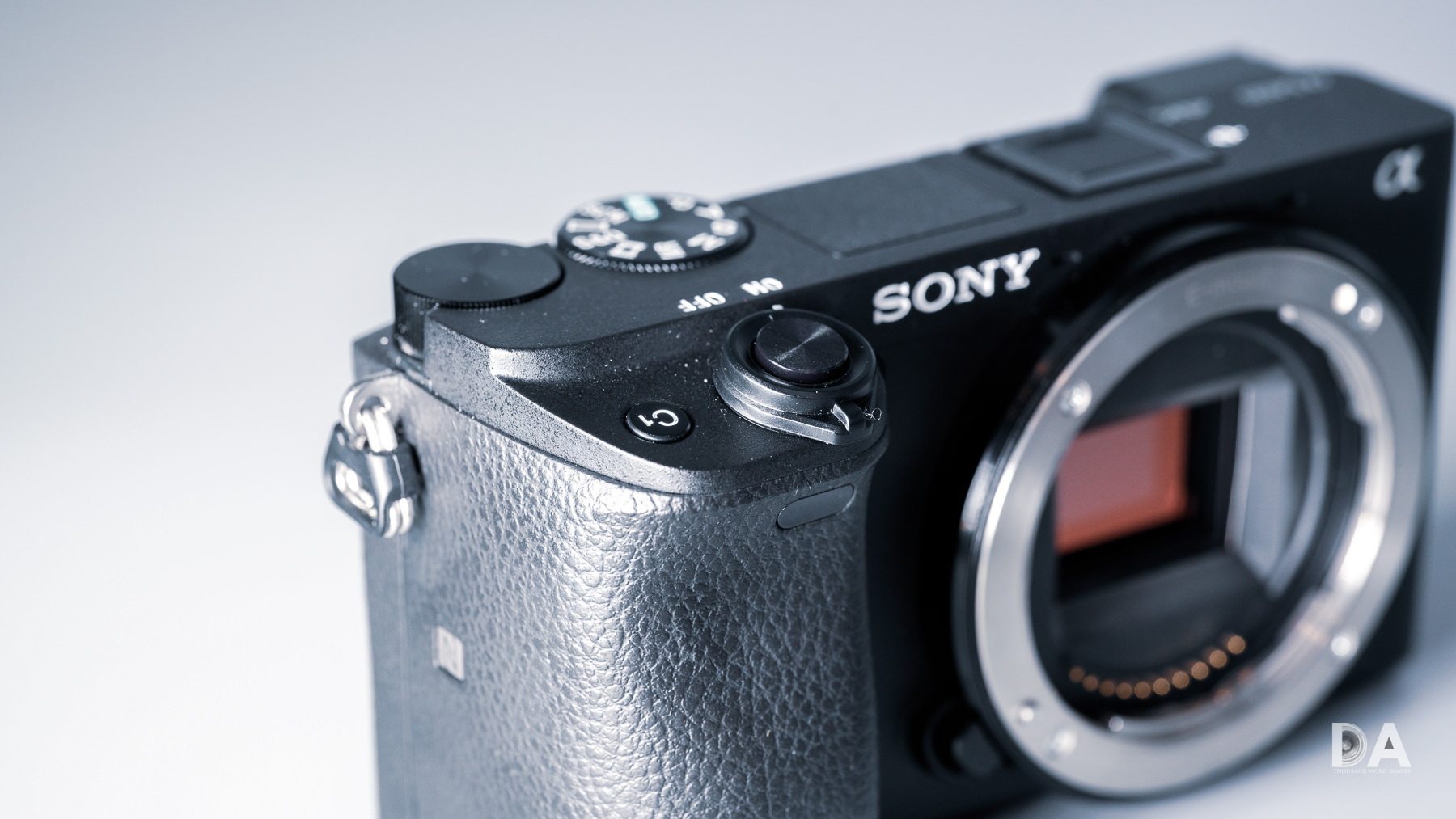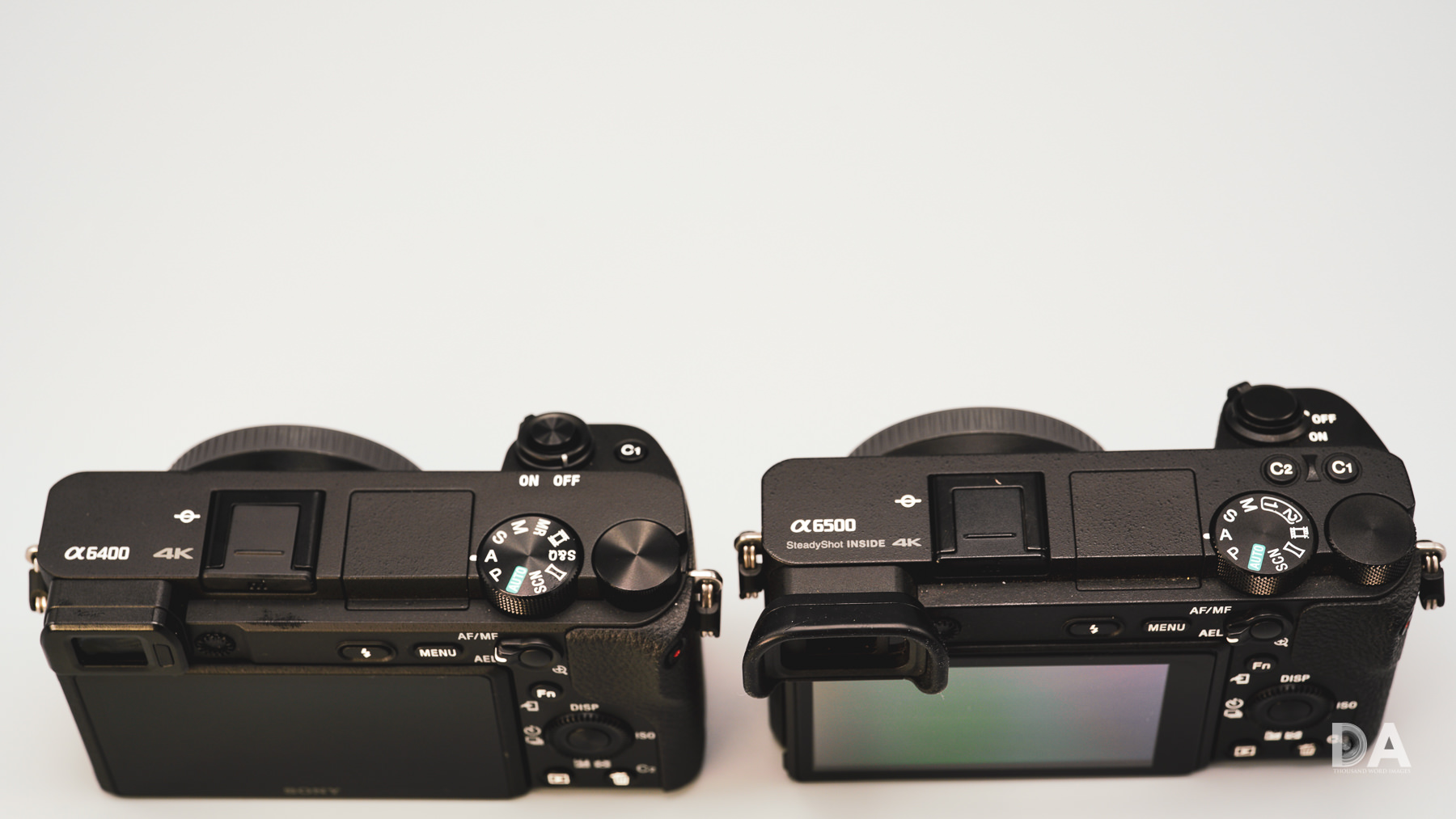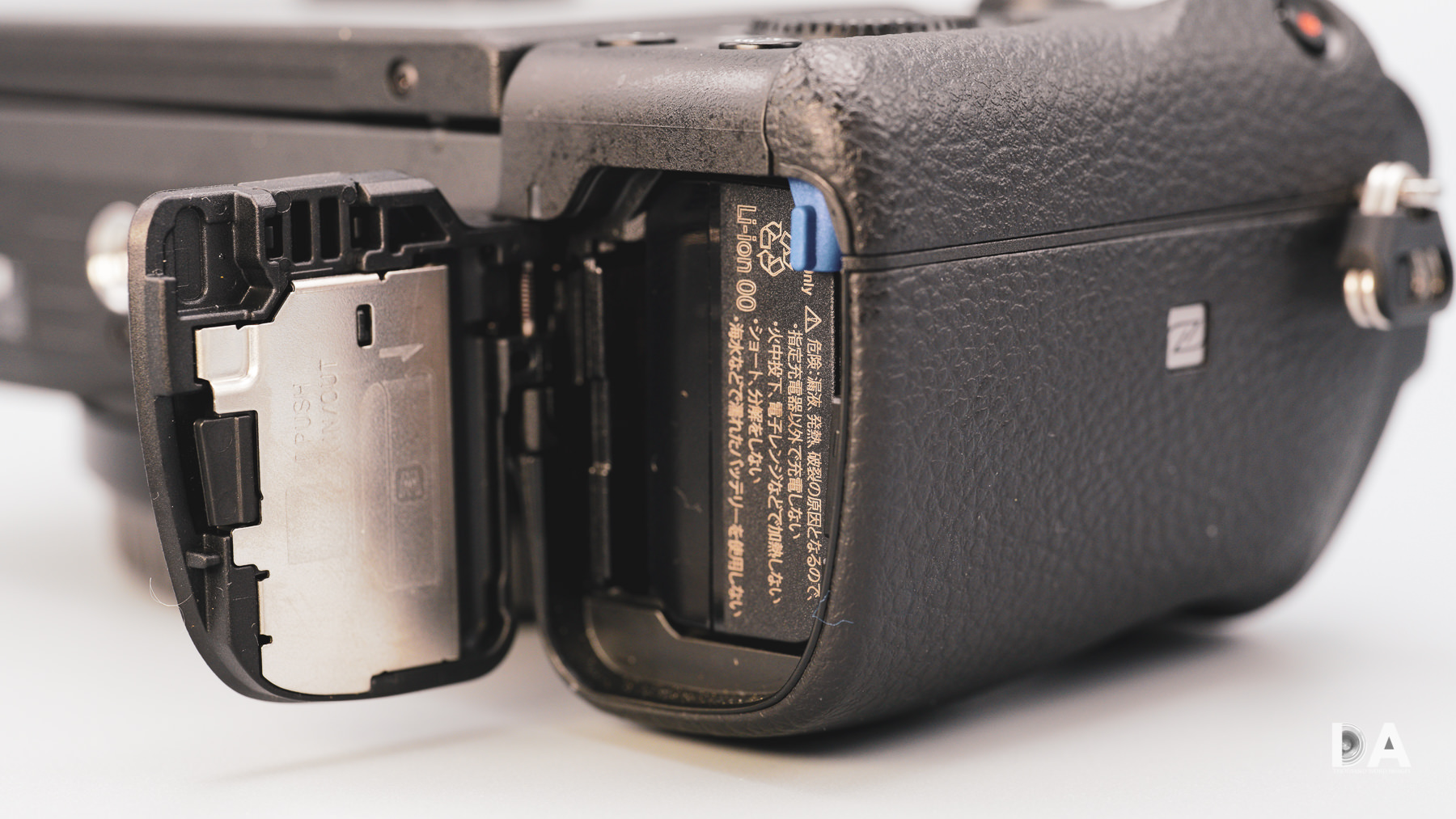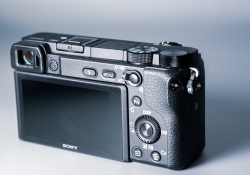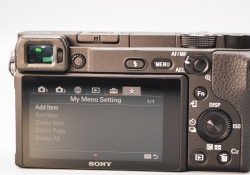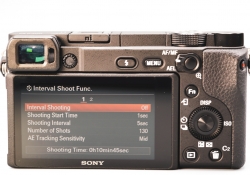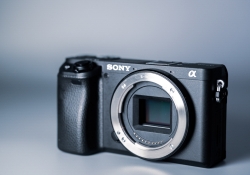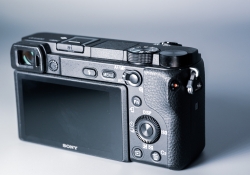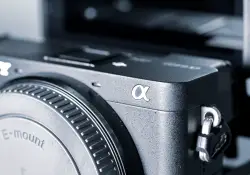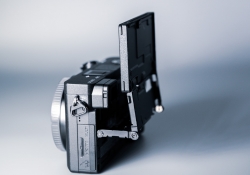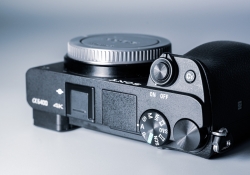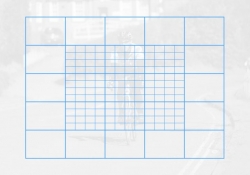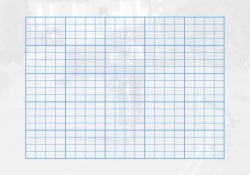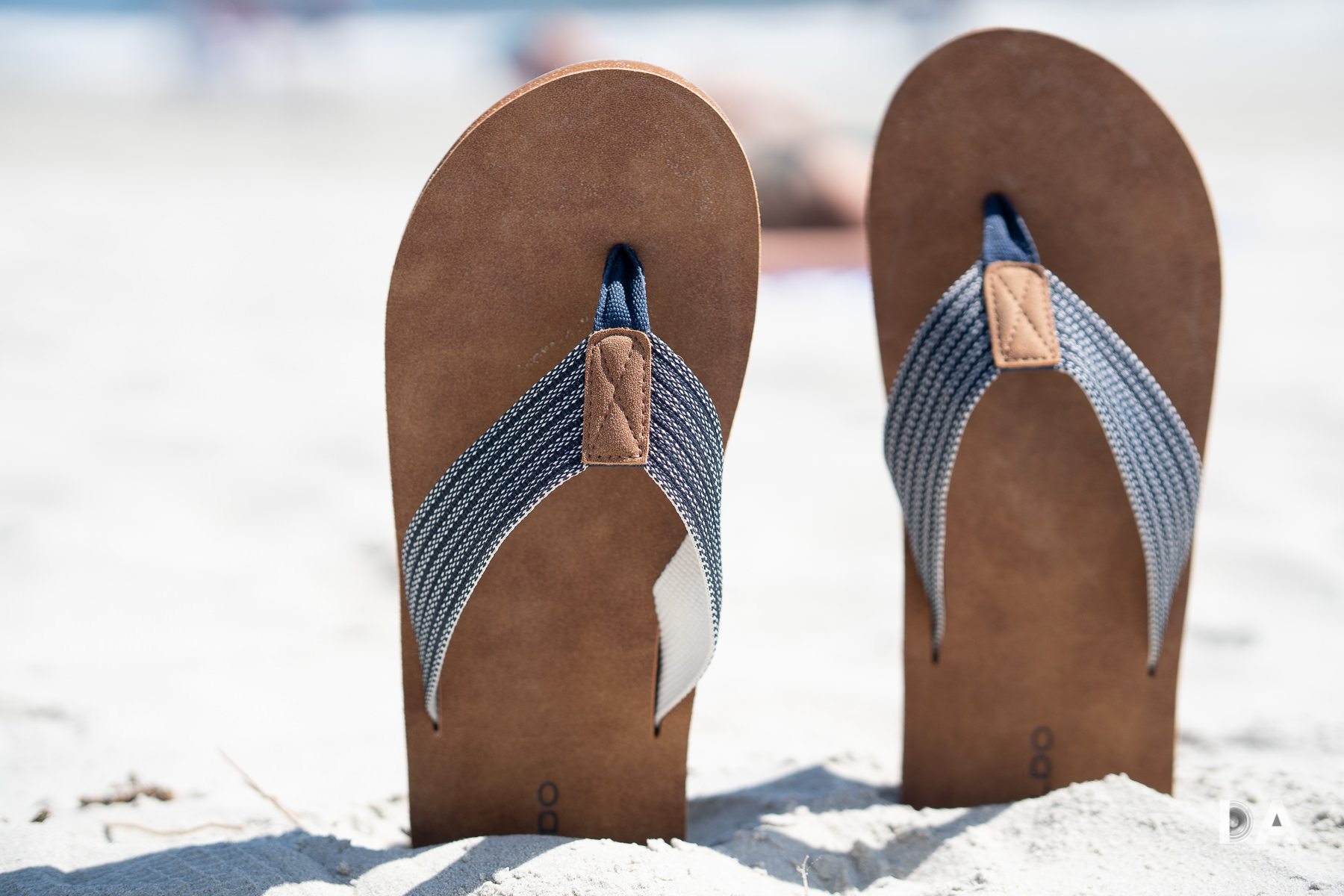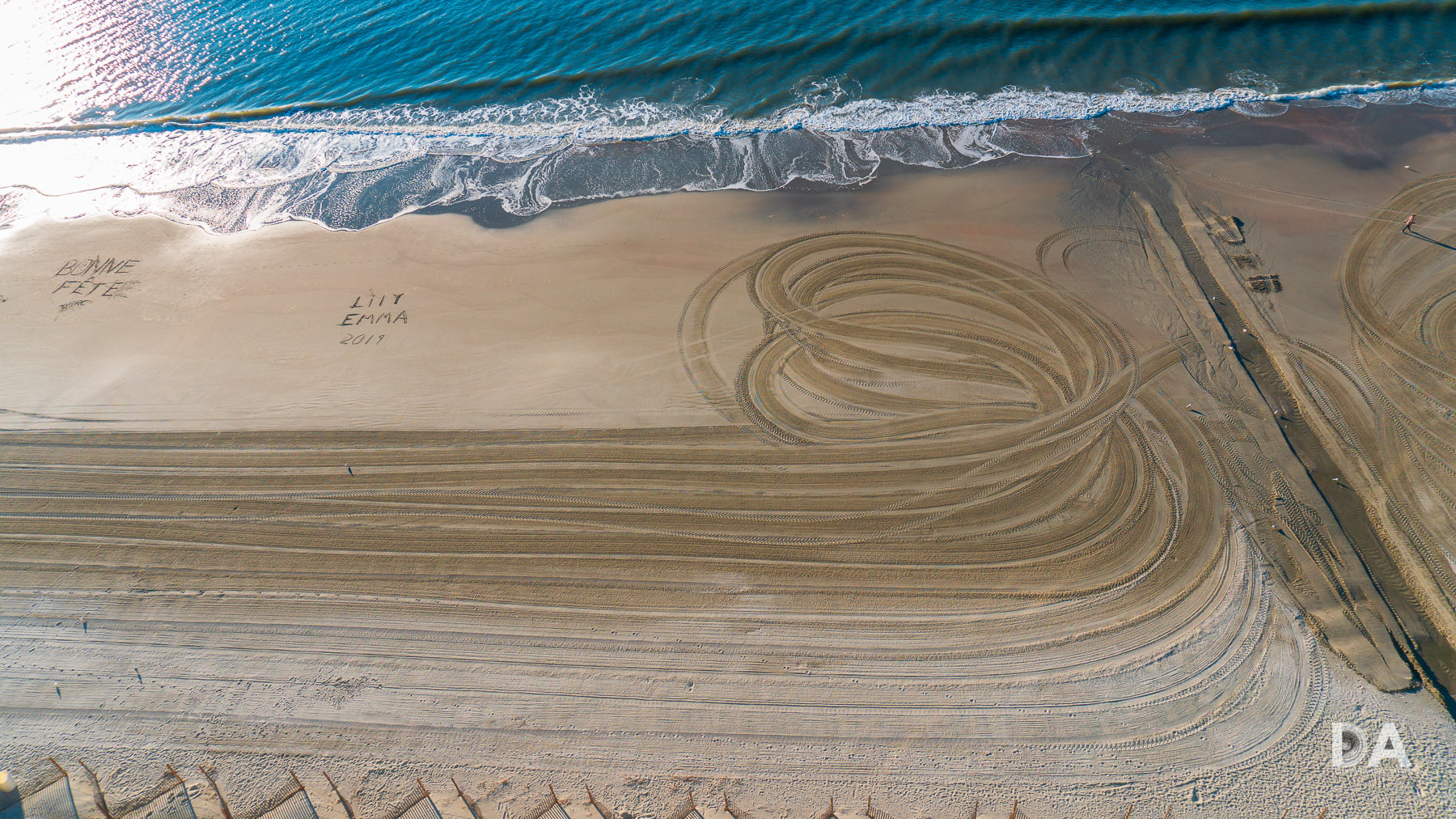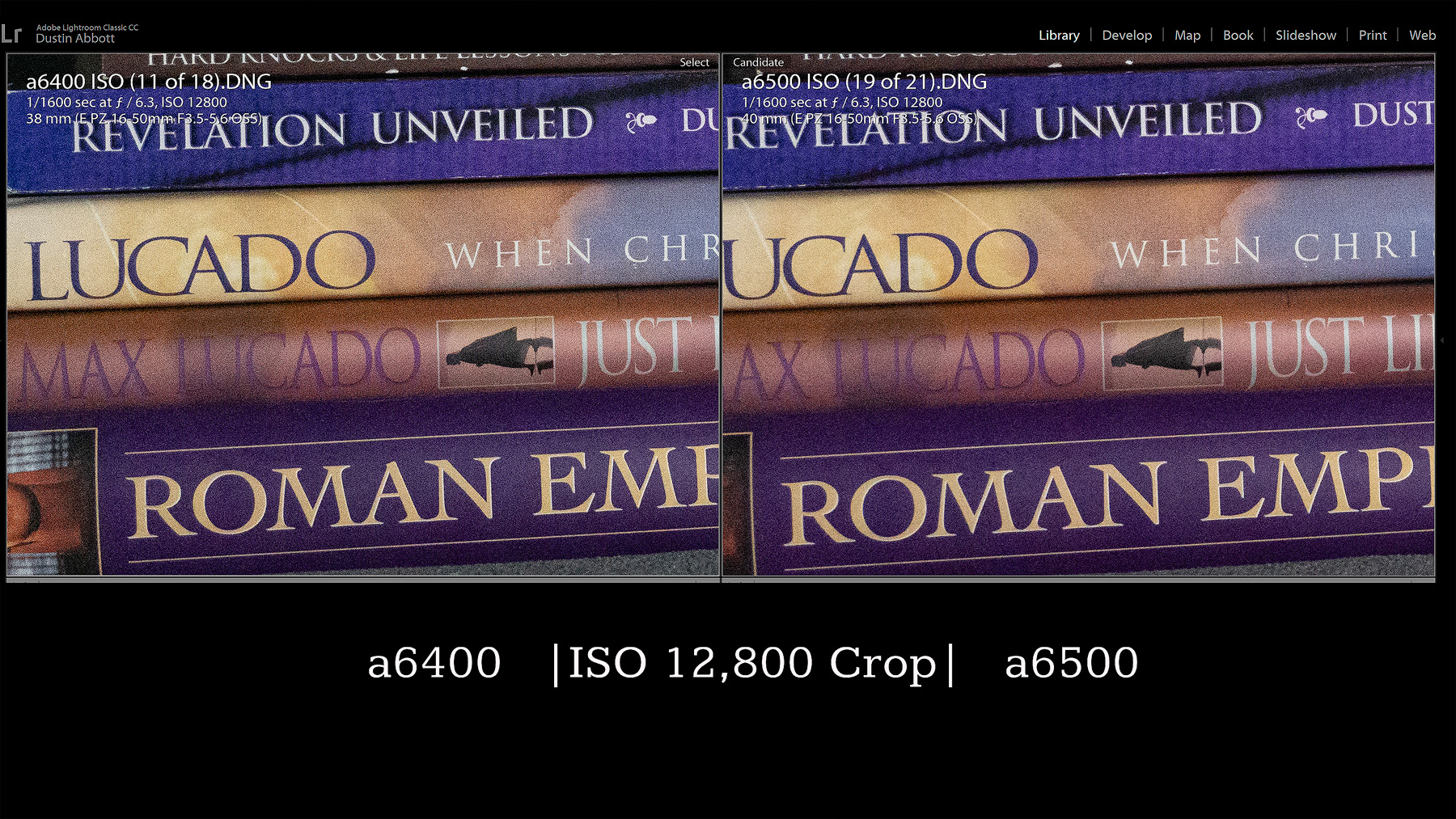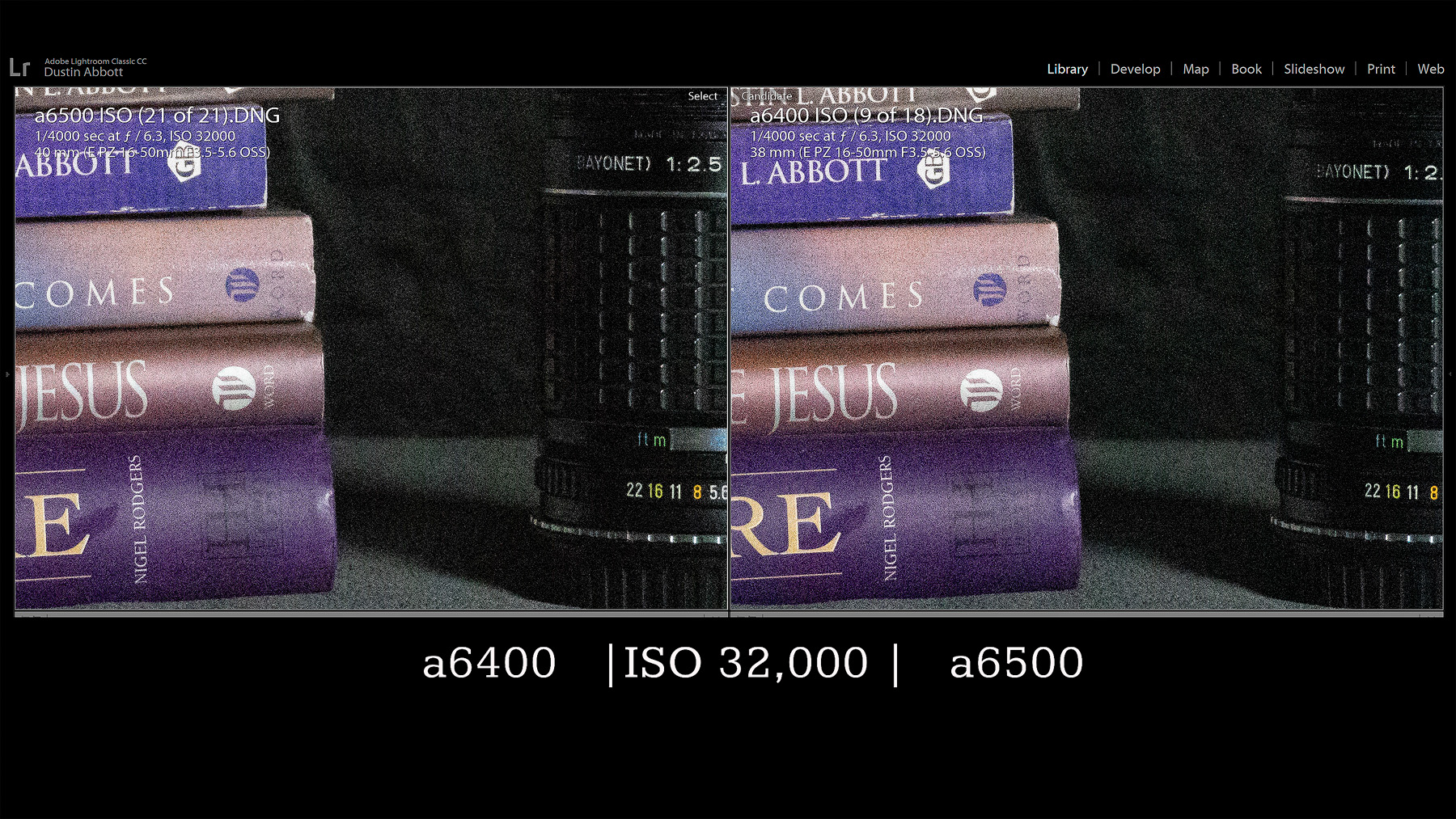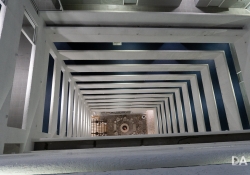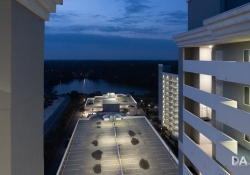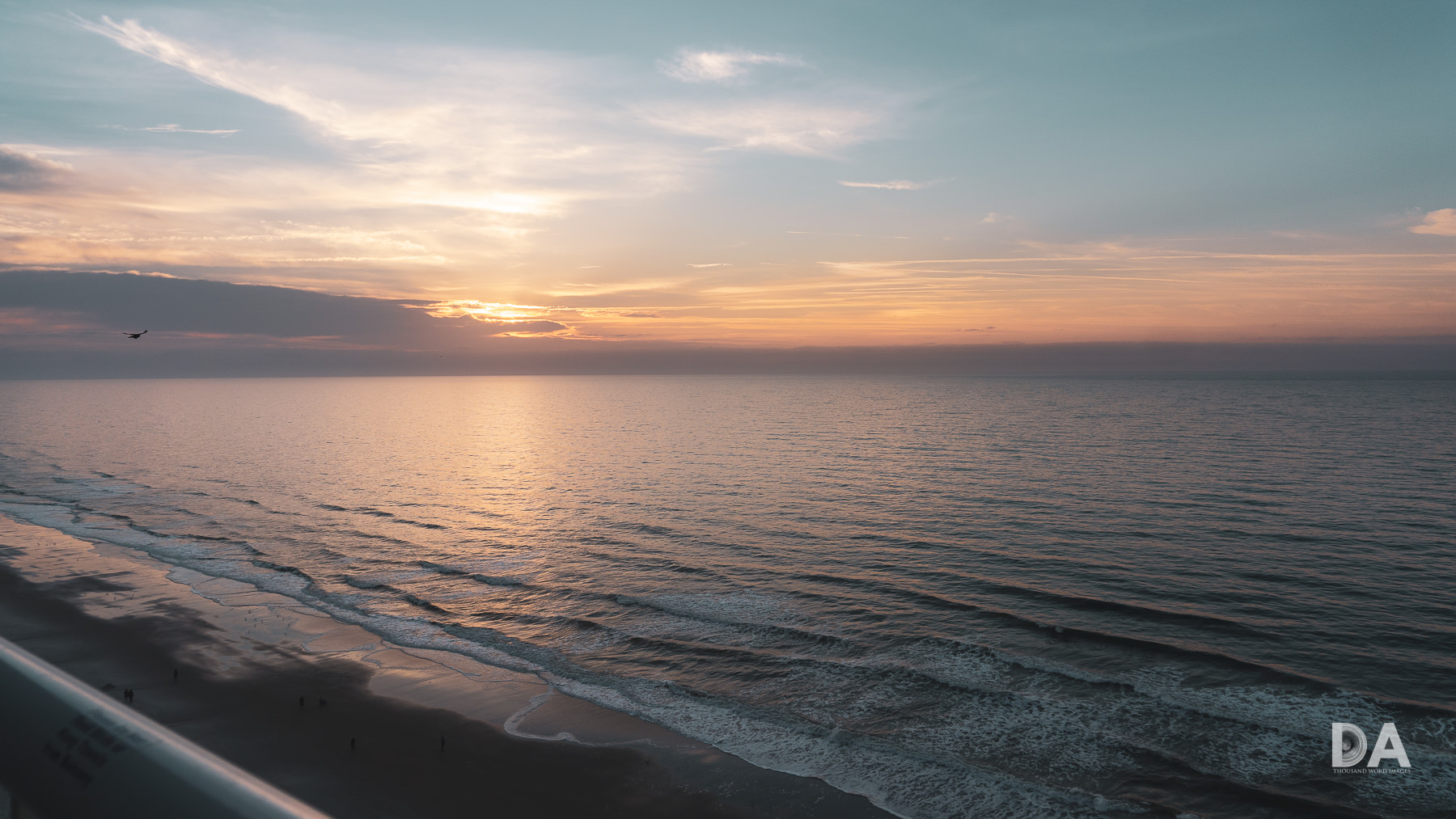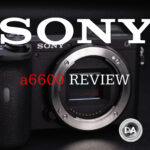Sony surprised some of us with the announcement of the Sony a6400 APS-C mirrorless camera. Many of us expected Sony to continue moving upscale with an a6500 replacement, but instead it appears that Sony is going flesh out their APS-C mirrorless offerings with more of an upgrade to the a6300 (in the a6400) while then later updating the a6500 with a more premium option. This move will certainly create a little market confusion in the present, however, as while the a6400 is a clear upgrade to the a6300, potential buyers must also consider the a6500 as the price is only $200 different in the US Market (at the time of this review). The a6400 does have some upgrades when compared to the a6500 (a more robust AF system, for example), but also loses some key features like SteadyShot (In-Body-Image-Stabilization) and the deeper buffer depth of the a6500.
You can get the a6400 body-only or in a few kit lens combinations. The least expensive is found in adding the tiny E 16-50mm F3.5-5.6 OSS lens, which, while no world beater optically, can produce pretty pictures, has OSS (helps to make up for the lack of IBIS), and only raises the sticker price by $100 (the lens costs nearly $300 when purchased separately). Here’s one taken with that combination, and you can see a gallery of others in the gallery page here:
Sony’s most recent camera seems to be specifically targeted at the Vlogging and Selfie crowd with a revised physical design of the screen that allows it to tilt up into a forward facing position. The Sony a6400 also inherits some trickle-down improvements from the third generation a7 series with improved focus algorithms, a more robust coverage of Contrast AF points (now 425 across the frame), and improved focus speed (which they claim to be the fastest in the world). It is the first of Sony’s cameras to receive their new “Real-Time Eye AF and Tracking”, which no longer relies on a button press to activate Eye-AF. This new technology will (fortunately) come to several other Sony models (the A9 already and the third-gen A7 bodies shortly). Sony has made some other incremental improvements, including squeezing a little more battery life out of the not-overly-loved NP-FW50 battery pack, further eliminating the overheating issues particularly found on the a6300, and even improving the response time that prevented you from accessing menu settings after taking a photo. This review will hopefully help you make a decision as to whether the a6400 is the camera for you.
Follow Me @ Patreon | My Newsletter | Instagram | Facebook | Twitter | Flickr | 500px
Prefer to watch your reviews? See my full video review of the a6400 here!
Here are some of the feature highlights of the a6400:
- 24.2MP APS-C Exmor CMOS Sensor
- BIONZ X Image Processor
- Real-Time Eye AF & Real-Time Tracking
- XGA Tru-Finder 2.36m-Dot OLED EVF
- 3.0″ 921.6k-Dot 180° Tilting Touchscreen
- Internal UHD 4K Video, S-Log3, and HLG
- Built-In Wi-Fi with NFC
- 425 Phase- & Contrast-Detect AF Points
- Up to 11 fps Shooting and ISO 102400
What’s new on this list is the Real-Time AF features, HLG (Hybrid Log profile – good for HDR), and the 425 Contrast-Detect AF points (the a6500 has 169 CD-AF points). What’s also improved is that Sony has reconfigured the hinges on the tilting LCD screen so that it can now be rotated 180° upwards into “selfie-mode” where the screen can be viewed from the front of the camera (though with a few caveats that we’ll detail in a moment). The native and “expanded” ISO range has also received some minor improvements, moving from ISO 25,600 on the a6500 to ISO 32,000 on the a6400 (one-third stop). We’ll also explore if this indicates a real improvement. Let’s jump in a take a closer look at all of these new features and more.
Sony a6400 Overview
The best way to get the hands-on overview of the camera and its features is to watch this video. It highlights what has changed compared to the a6400, and what hasn’t…
The basic physical shape is so similar to the a6300/a6500 blueprint that you have to look closely to note the differences.
The biggest physical change is a positive one, however, as the grip shape has been retooled to be a bit less pointed and a little thicker. The a6400 is 4.7 x 2.6 x 2.4″ (120 x 66.9 x 59.7mm), with the only change being to the thickness of the camera (which is .3″ thicker than the a6500). The camera is actually a bit lighter, however, at 14.22 oz (403g) compared to 453g for the a6500. I suspect the difference in weight is mostly due to the lack of the IBIS in the a6400. The change to the grip is a good one, as I feel more like I’m holding rather than pinching the camera grip now, though the width of the camera (and thus the grips) is still way too small for those of us with bigger hands.
The other major physical change only becomes apparent when you tilt the screen out. Where the upward rotation of the of the screen is limited to 90° on the a6500, the a6400 will rotate up a full 180° until it is forward-facing, enabling a “selfie-mode” or means to monitor video from the front.
This is undoubtedly useful, as it can help with framing, with actually taking selfies, and also gives Sony a specific marketing strategy. There are limitations, however, as the eyecup blocks a small part of the screen on the right side already, and if anything is mounted on the hotshoe (microphone, for example), a good portion of the screen will be blocked as the hotshoe lines up almost perfectly in the middle of the screen. Vloggers might still prefer the unobstructed view of, say, a Canon articulating screen that can face out on the side where there are no obstructions. Sony also still hasn’t addressed the issue of tilt when shooting in vertical/portrait mode. Fuji allows some vertical tilt in their screens, and it would be nice to see Sony implement something similar. But while not perfect, this redesign undoubtedly adds some additional functionality to the A6 series.
There is also a minor change to the mode dial. The a6500 was positioned to a slightly more professional demographic, so it contains 2 Custom Modes on the mode dial. I’m sorry to those gone here, though Sony did (somewhat confusingly) add one MR (Memory Recall) mode which serves a similar function. They also added S&Q (Slow and Quick) to the mode dial whereas you had to access it through the menus on the a6500.
The other physical change is that rather than the C1 and C2 buttons along the top of the a6500 there is now only one C1 button, and it has been moved up near shutter button. The wider grip allows room for this change, though I’m not sure that I prefer one position over the other. The one less programmable custom button is obviously a downgrade from the a6500 and shows again that the a6400, while superior in a few areas, is actually more a natural upgrade from the a6300 than the a6500.
Somewhat ironic is the fact that I have SteadyShot mapped to C2 on my a6500. So, while the C2 button is missing on the a6400, so is the function that I had attached to it. The inclusion of Sony’s excellent IBIS (In Body Image Stabilization) in the a6500 was the “killer app” that set it apart and was the deciding factor for me to purchase one two years ago. Not including SteadyShot in body is undoubtedly both a cost-saving move and the primary means of distinguishing Sony’s two APS-C mirrorless lines, but it is definitely a loss. This has been one of Sony’s key advantages in this market, and we will see how much dropping IBIS from the a6400 impacts it.
Beyond these changes, the handling of the a6400 is near identical to earlier bodies, for good and evil. There are some things I seriously wish were changed. At the top of the list in the placement of the memory card slot in the battery door on the bottom of the camera. It always makes removing the memory card a serious pain, as there is little clearance for one’s fingers in there. This is exacerbated if you add a grip extender or L-bracket of some kind, as it increases the depth. With my Small-Rig L-Bracket in place on my a6500 I feel like I need to remove the battery to allow sufficient access to really grip the card. A memory card position on the side the of camera like the a7 series or Fuji XT series would be vastly preferred. Some might also criticize the single card slot, but frankly there are few sub-$1000 cameras with dual card slots, so I find it hard to get too bent out of shape over this.
I’m also not a fan of the video record button placement (another carryover). It is in an awkward position that I never find easy to access even after two years of familiarity (I’ve used the a6500 extensively for my YouTube channel).
Another annoyance is that Sony has still noted really improved the versatility of their touchscreen, which continues to lag behind the competition in somewhat puzzling ways. On the plus side, using the touchscreen to select a focus point and or drag a flexi-point around while looking through the viewfinder works better than ever. But touch to shoot or track is somewhat mysterious and menu navigation by touch simply doesn’t exist. I You can find a setting for “Function of Touch Operation” in the Custom Operation 2 tab (9 of 9 – in other words, buried deep), and this will allow you to change touch function to focus, shutter, or track. You will want to map this function to a custom button or your “My Menu”, as as it stands it simply isn’t easy to access. Canon and Fuji allow you to make this change right on the touchscreen during normal operation. Sony could have at least mapped it to the FN menu. I’ve used Canon, Nikon, and Fuji bodies that have these things figured out to some degree (Canon is still tops), but for some mysterious reason, Sony can’t nail this down.
On a positive note, Sony has made a few improvements to the menu structure. One positive change is that they have added some of the improved menu sorting from the a7 series, including the “My Menu” tab that allows you to populate it with frequently used settings that you would like quick access to. The other change is the addition of a built-in intervalometer (not a separate app) so that you can shoot time lapses or intervals in camera. There doesn’t seem to be functionality to build time lapse movies in camera (that requires using software), but this is a welcome change, as, frankly, the in-camera app store was an idea whose time had NOT come, and Sony phased it out in the third-gen a7 cameras. The LCD is a similar resolution as before, but it does appear to have a little better contrast.
Beyond this the ergonomics are pretty much what you would expect. Unlike the a7 series, there is no front wheel/dial to use for shutter speed or aperture, so you are left with using the single wheel next to the mode dial or using the rotating wheel/D-Pad for these (and other) functions. You have to be a little careful with the rear wheel, as too much pressure can activate the Directional Pad function instead. This makes using the a6 bodies with gloves a little complicated at times. The feel of the buttons and dials is indistinguishable from the a6500 that I’m so familiar with.
I would still love to see some kind of small joystick on the back of the camera to help with navigation of menus and even selecting focus points (like the Fuji X-T3), but with your eye pressed to the viewfinder the touchscreen is arguably the best way to select a focus point. I’d be happy to take a more functional touchscreen that included menu navigation as well!
I alluded to it earlier, but there are a few functional improvements made to the handling of the camera. The Sony a6300 had serious overheating issues when shooting 4K. It was not uncommon for the camera to shut itself down in 10 minutes or less. Some improvements were made to the a6500 to solve this problem, including a setting that would allow the camera to raise the heat threshold before shutting down. I’ve reviewed the a6400 in March, which is not exactly a time when many things are overheating in my part of the world, but others have reported that this issue has been further improved. Sony has also eliminated the 29:59 minute recording limit as well, which helps the video functionality.
Other tweaks include a faster response time after shooting and then accessing menu functions. Earlier Sony bodies could be painful in how it took before you could access, say, playback or a settings change after taking a photo (or worse, a burst of photos!), but the a6400 is noticeably improved in this regard. Burst images are also handled as a group, so you have more options for either playback or deleting them because of improvements to sorting.
Sony a6400 Video Functionality
Sony’s a6 series have become video juggernauts, offering surprisingly robust video options and incredibly good footage (particularly in 4K). The a6400’s video capabilities are a mild evolution, but taken as a whole they are impressive. We’ve noted the improvements to controlling overheating, recording time limits, and the forward facing LCD screen, but there are a few other improvements as well. What’s not improved is the video recording options, which include:
3840 x 2160p at 24/25/30 fps (100, 60 Mb/s XAVC S)
1920 x 1080p at 100/120 fps (100, 60 Mb/s XAVC S)
1920 x 1080p at 24/25/30/50/60 fps (50 Mb/s XAVC S)
1920 x 1080p at 50/60 fps (25 Mb/s XAVC S)
1920 x 1080p at 25/30 fps (16 Mb/s XAVC S)
1920 x 1080i at 50/60 fps (24, 17 Mb/s AVCHD)
We didn’t get 60 FPS in 4K recording, unfortunately (Panasonic and Fuji have an edge there), but as previously noted, Sony did add HLG (Hybrid Log Profile), which allows the camera to produce footage better suited to High Dynamic Range (HDR) editing and playback. As before, the two crop options are dependent on whether 24 or 30 FPS is selected. 24 FPS utilizes the Super 35 mode, which employs the full readout without pixel binning to produce a 6K oversampled picture that is incredibly detailed. 30FPS requires a 1.6x crop factor, so you will notice a difference in framing and a slight reduction in quality due to pixel binning (though the footage is still excellent). 120FPS is available in 1080 to allow for nice slow-motion work, though getting this at a 4K resolution will have to wait until future cameras.
Further improvements to video functionality are realized due to the improvements to the autofocus system. Speaking of which…
Sony a6400 Autofocus
The a6400’s chief claim to fame is that it is the first Sony camera (period) to debut Sony’s new “Real-Time Eye AF & Real-Time Tracking”. While Eye AF previously had to be mapped to another button, now it is always available in AF-C (continuous) mode when you half-depress the shutter button. This allows Eye AF and tracking to happen in a more fluid, intuitive fashion. This is particularly useful on the a6400 which has few physical controls to customize this functionality to. Another improvement is the addition of Pet Eye AF (I’ve long noted with all Sony bodies previously that Eye AF would rarely work on animals). I shot a fair number of portraits with the new Sigma 56mm F1.4 DC DN lens mounted on the a6400, and it was great to see how easily intuitive Eye AF was (and how well it worked).
This functionality also further helps video tracking as the system’s improvements are on all the time and work in real-time. This may be the technological leap that helps Sony match Canon’s DPAF face tracking which has been industry leading for a while.
Further bolstering this progress is a more robust AF system. The a6500 sports 425 Phase Detect AF points like the a6400 (covering almost all the sensor – see photo 1 below). But the a6300 and a6500 were limited to 169 Contrast AF points, which left the outer parts of the frame without as good of AF coverage (see image 2). The a6400 has 425 Contrast AF points, making those of the Phase Detect system, meaning that the outer areas of the sensor have as good of AF coverage as the center (see Image 3 below). This is most useful for tracking or composing on the outer portion of the frame.
This makes capturing action easier than ever as the a6400 is capable of a blistering 11 FPS with mechanical shutter:
Unfortunately the buffer didn’t receive a similar upgrade. It’s actually downgraded from the a6500’s figures.
A6400:
Up to 11 fps at 24.2 MP for up to 46 Exposures (Raw Format)
Up to 11 fps at 24.2 MP for up to 116 Exposures (JPEG Format)
a6500:
Up to 11 fps at 24.2 MP for up to 233 Exposures (JPEG Format)
Up to 11 fps at 24.2 MP for up to 107 Exposures (Raw Format)
This is clearly another area that Sony will use to distinguish these two lines (the replacement for a6500 will probably be touted as a more sports-oriented model with deeper buffer and possibly even faster frame rates along with undoubtedly having Sony’s IBIS). Two points, however: one area where the a6400 is improved is that it now has a still-robust 8 FPS in silent shutter mode while the a6300/6500 capped out at 3 FPS in silent shutter mode. The second observation is that while the buffer is reduced from that of the a6500, it is still very competitive, besting that of, say, the Fuji X-T3, a camera costing nearly twice as much.
Put simply, the a6400 sports one of the most competitive AF systems in the class. Sony claims the focus acquisition speed of 0.02 seconds, a focus speed they claim to be the world’s fastest. In real world use the focus was quite excellent with the lenses that I used.
Shallow depth of field is no problem when you’ve got a comprehensive AF system like this.
Sony a6400 Sensor Performance (Image Quality)
When the a7RIII replaced the a7RII, Sony focused more on the autofocus and handling of the camera rather than the sensor, which was already excellent. The same is largely true here. The a6400 sports the now-common 24.2MP APS-C Exmor CMOS Sensor and BIONZ X Image Processor we’ve seen for a while, though they’ve done some tweaking to improve the color science and noise handling. It is based on this that they’ve expanded the ISO range from 100-25,600 in the a6500 to 100-33,000 here, with the expanded limit also increasing (to 102,400). I did some tests to determine how much change had been made. The best way to see what’s changed and what is the same is by watching this video where I directly compare the a6400 and a6500 in ISO performance and dynamic range:
First of all, I found that more is similar than different on this front. This is one of the best APS-C sensors out there, capable of producing great detail, with an excellent dynamic range and very good noise handling, so few improvements were desperately needed.
The sensors/cameras didn’t behave identically (even with the same lens attached), so I did note minor differences in metering, color balance, and color science. For the most part, however, it would be hard to spot these things without having the cameras side by side in controlled conditions. I hadn’t really noticed any of them before my formal side by side tests, and I had taken hundreds of images in real-world situations before. My point: don’t expect a “night and day” improvement if you are coming from the a6300 or a6500.
That’s not to say that I saw no positive signs. In the video above, you will see that I noted that the a6400 seemed to retain slightly more contrast and detail at higher ISO values, though, as this crop shows, it might be hard to detect this if you didn’t have identical images side by side.
What was more obvious, however, was the shadow recovery coupled with the ISO performance. The files from the a6400 have a little more latitude to be “pushed” in post process. While highlight recovery at higher ISO values was about equal, shadow recovery definitely favored the a6400, which retained more contrast and better color fidelity in my 3 stop shadow recovery. Not night and day better, but observably better.
In less extreme circumstances, however, I didn’t see a significant difference between the two. In fact, I felt the a6500 has slightly less of a green cast in a few instances.
As for the the increase of the standard ISO range: meh. I had to use the expanded range on the a6500 to get to 32,000, but frankly, I don’t see much of a difference and I doubt you will either.
All in all, however, this isn’t a negative conclusion. I didn’t expect any significant upgrades to this sensor, as it one of the best (if not the best) APS-C sensor on the market by any metric. It delivers great high ISO performance, is the top-rated APS-C sensor for dynamic range (at the point of this review), and delivers highly detailed, beautifully colored results.
I’ve took many images over my review period with the a6400, and space does not permit me to share more here, but I would recommend that you visit the image gallery page here. It is loaded with great photos!
Conclusion
The Sony a6400 marks what I believe to be a splitting of their a6 series lineup into two separate product lines: one with IBIS and a sports-orientated deep buffer and one designed and priced more for mass-market appeal. Sony’s excellent 5-axis IBIS is certainly missed here, but it is worth noting that the base price has been dropped by $100 relative to the release price of the a6300 at launch 3 years ago (2016), and the a6300 lacked IBIS as well. The a6400 is a great evolution of the a6300, and is a more complete camera in every facet. It has significantly better autofocus, an improved physical design (complete with “selfie-screen”), and has smoothed out a lot of the rough edges (overheating, anyone?) For the moment the upgrade path is muddied by the existence of the a6500, which has some superior features (IBIS, buffer) combined with a few inferior features (focus system, silent burst rate). I suspect the replacement for the a6500 will have those new features along with other improvements, and I personally would love to see it move into a more robust, sports-oriented body with better battery life and thicker grip to allow better pairing with telephoto lenses. But the bottom line is this: the a6400 gives you a lot of bang for your buck.
The new Eye AF technology works great, the video functionality of the camera is impressive, and the sensor continues to be one of the best APS-C sensors on the market. Pair it with a nice compact telephoto like the new Sigma DN 56mm F1.4 C and you’ve got an amazing portrait combination. It’s video footage is impressively good, as are the photos. The a6400 hasn’t solved every one of my irritations with the a6 series, but this is a very mature camera on a lot of levels. There’s a lot to love, and relatively little to criticize. In fact, if this camera had Steady Shot, it might just be everyone’s favorite new APS-C camera. It doesn’t, so I doubt I’ll trade my a6500 for it, but it does make me anticipate the potential replacement for the a6500. Maybe you don’t need IBIS, though, and, if you don’t, the a6400 is an easy recommendation as a very versatile camera for a reasonable price.
Pros:
- Excellent autofocus system that is snappy and accurate
- Real-time Eye AF and Tracking works as advertised
- Useful handling improvements, including less overheating issues and faster response
- Silent burst sped increases to 8 FPS
- Screen now rotates up to enable front monitoring
- Excellent image quality
- Excellent video performance
- Reasonably priced considering specifications
Cons:
- No In Body Image Stabilization (IBIS)
- Reduced buffer specifications from a6500
- Single memory card slot located in a frustrating spot to access.
Gear Used:
Purchase the Sony a6400 @ B&H Photo | Amazon | Amazon Canada | Amazon UK | Amazon Germany | Ebay
Sony a6500: B&H Photo | Amazon | Amazon.ca | Amazon UK | Ebay
Purchase the Sigma DN 56mm F1.4 C @ B&H Photo | Amazon | Amazon Canada | Amazon UK | Amazon Germany | Ebay
Peak Design Leash Strap: Peak Design Store | B&H Photo | Amazon | Amazon Canada | Amazon UK
BenQ SW271 4K Photo Editing Monitor – B&H Photo | Amazon | Amazon.ca | Amazon UK
Adobe Photoshop Creative Cloud 1-Year Subscription
Alien Skin Exposure X4 (Use Code “dustinabbott” to get 10% anything and everything)
Visit Dustin’s Amazon Storefront and see his favorite gear

Purchasing your gear through B&H and these links helps fund this website and keeps the articles coming. You can also make a donation here if you would like. Visit my Amazon page for some of my gear of choice! Thank you for your support.
Great News! I can now offer a 5% discount on all purchases at Amplis Foto, Canada’s Leading Photographic Supplier. Please enter discount code: AMPLIS52018DA in your cart. It is good for everything in your cart, and is stackable with other coupons, too! It will take 5% off your entire order! Proceeds go towards keeping this site going and providing you with new reviews!
Check me out on: My Patreon | Sign Up for My Newsletter | Instagram | Facebook | Twitter | Flickr | 500px | Google+ |
Use Code “DUSTINHDR” to get $10 off ($15 CDN) any Skylum product: Luminar, Aurora, or AirMagic
Keywords: Sony a6400, Sony Alpha, a6400 Review, Sony, a6400, Review, Dustin Abbott, a6500, a6400 vs a6500, Hands On, Video Test, Sharpness, Autofocus, CA, Video AF, Autofocus, Eye AF, Lens, Comparison, Test, Dustinabbott.net, Sample Images, Sample Video, Normal, Portrait, Travel, Canada, Myrtle Beach, Niagara Falls


